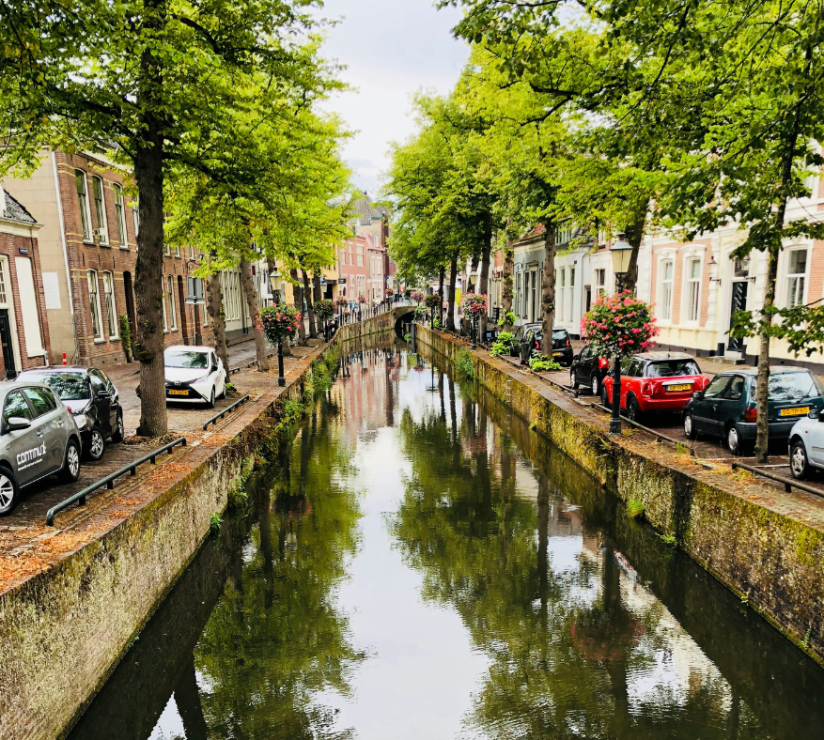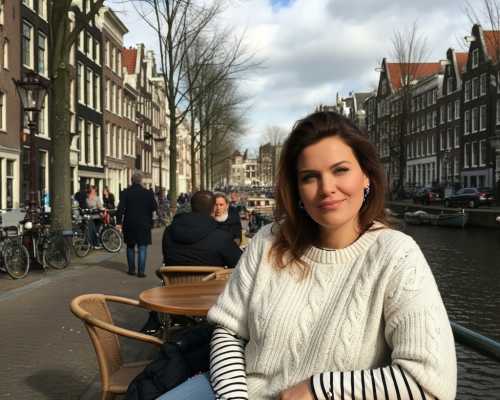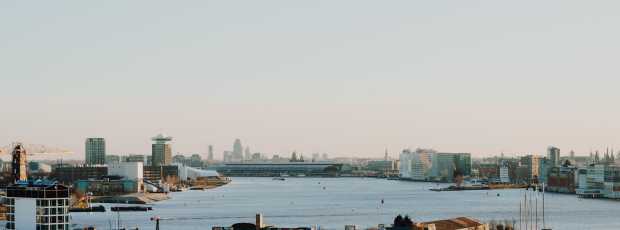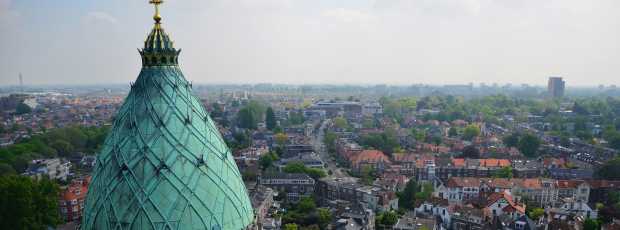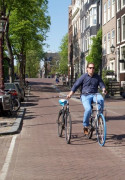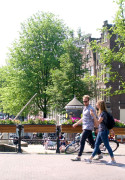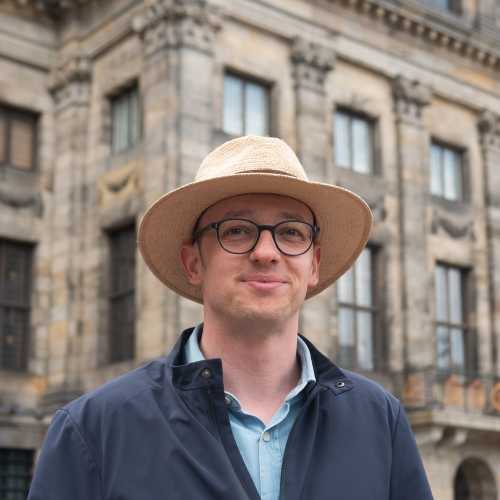This was a fantastic tour and is helpful to understand the city. This will definitely give you a proper orientation for further exploration of the city.Bradley, Amsterdam, 2025
Table Of Contents
- Everyday Amsterdam Hidden Gems Near the City Center
- Cultural and Creative Gems Off the Beaten Track
- Amsterdam’s Floating Life Without the Hype
- Hortus Botanicus: Tropical Calm in a 17th-Century Garden
- Markets With True Culture, Not Magnets for Touristy Crowds
- Small Museum Moments in Grand Buildings
- Neighborhood and Social Gems
- Overrated “Hidden Gems” and Better Alternatives
- Explore Amsterdam on a Budget
- Frequently Asked Questions
- Final Thoughts
I’ve been walking these streets for thirty-four years, and I still find corners that make me pause. The truth about hidden gems in Amsterdam isn’t that they’re locked away somewhere secret.
They’re hidden because most people rush past them while hunting for popular museums or charging through the Red Light District.
My city has this weird thing where the best spots hide where least expected. I’m talking about places right here in the Dutch capital that tourists walk past every day because they don’t scream for attention big-name attractions do. These secret spots live in the space between guidebook pages.
Most people arrive with things to do in Amsterdam in their heads, then discover the quiet corners that matter more.
After three decades here, my favorite hidden gems aren’t where guidebooks take visitors. They’re pieces of daily life that happen to be extraordinary if you know how to look.
I've seen folks stay on the beaten path because it feels safer, but the city keeps its best stories just one turn off the main routes.
Everyday Amsterdam Hidden Gems Near the City Center
You don't need a map for this. You need curiosity and a habit of turning left when everyone turns right.
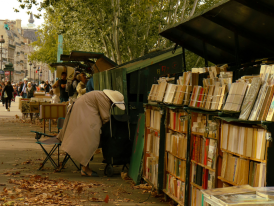
Second-hand book stalls
Oudemanhuispoort: A Quiet Shortcut With Character
Walk between Kalverstraat and Spui, and you’ll find Oudemanhuispoort (locals call it the old man’s house passage). This covered walkway has been he city’s intellectual heart since 1602, though most visitors use it as a phone-scrolling shortcut.
The passage holds about fifteen secondhand book stalls selling great reads, vintage prints, and academic materials. It’s not Pinterest-pretty, but it’s authentically Amsterdam in a way that modern shopping streets can’t touch.
I like to visit when I need to remember what the city center felt like before international retail chains.
I still haggle for dog-eared Penguin paperbacks here, and the sellers know me by the way I thumb spines.
The City Archives, housed in De Bazel at Vijzelstraat 32, are also worth a quick peek in the public foyer for rotating displays of historical maps and documents. Both spaces feel scholarly rather than touristy.
Experiences Created by Locals, Just for You
See the city through the eyes of the people who call it home.
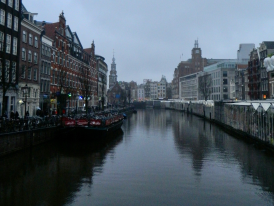
Early-morning canal reflections
Silence One Turn From the Red Light District
Behind Oudezijds Kolk, just off the Red Light District, you'll find some of the quietest narrow streets.
These back lanes still show you the old harbor city: brick warehouses, loading pulleys, and water-level doors from the days when boats delivered goods straight to merchants’ front doors.
If I can hear the water slap the bricks, I know I’ve beaten the crowds.
I like to walk here at 7 AM, when the party crowd has gone home and the crowds haven’t arrived yet.
The city center shows you its work clothes instead of its party dress. You can actually hear water lapping against the canal walls.
You'll find that the contrast hits right away. Turn one corner and you’re in neon-lit tourist madness. Turn another and you’re in 17th-century Amsterdam, complete with the smell of old brick and canal water.
These are the real Amsterdam experiences guidebooks don't tell you about.
Cultural and Creative Gems Off the Beaten Track
Amsterdam works best when it is quietly brilliant. These are the rooms where beauty and daily life still share a desk.
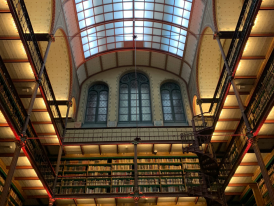
Inside the Cuypers Library, Amsterdam
Cuypers Library: Amsterdam’s Cathedral of Study
The Cuypers Library reading room isn’t just beautiful architecture. It’s functional beauty where people actually work and study.
Built in the 1890s in Neo-Gothic style, this library creates the kind of silence that modern libraries can’t achieve. View it from the balcony in Room 2.16. Research access is by appointment.
I bring my laptop here when I need to focus. The Neo-Gothic ceiling and tall windows create cathedral-like acoustics, where whispers carry and keyboards sound respectful.
It isn’t a museum you visit. It’s a workspace you experience.
I type softer here, like the arches are listening. Maybe a little silly of me, but I can't help it. If you go, you'll feel what I mean.
The reading room itself is the attraction. Watching people concentrate under those Gothic arches tells you how architects, centuries ago, understood the relationship between space and thought.
To me, the Cuypers Library shows that the city’s most impressive spaces are often the ones where locals still come to work.
At the City Archives you get free experiences that feels more valuable than paid attractions because nobody’s performing for you.
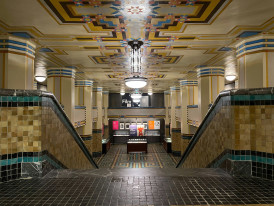
Inside the City Archives building
City Archives: Free Exhibits, Maps, and Special Events
The City Archives building downtown has one of the best free exhibition spaces most visitors never find. The ground floor rotates displays of documents, photographs, and maps that show Amsterdam before it became a tourist destination.
Recently, they showed building permits from the Middle Ages. Before that, there were photographs of Albert Cuyp Market from the 1920s. The archives curate these shows like a small museum, but without the crowds or entrance fees.
The staff here genuinely love Amsterdam’s documentary history. Ask questions and they’ll pull out additional materials that aren’t on display. It’s one of those free experiences that feels more valuable than paid attractions because nobody’s performing for you.
Ask for old tram maps. I always leave with black fingers and a new rabbit hole.
Check out the free Treasure Room on the lower level. Larger temporary shows may require a ticket, and the calendar often includes unique events and talks.
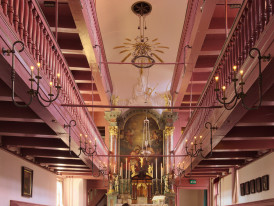
Hidden church Amsterdam. By C Messier.
Our Lord in the Attic: A Hidden Church With Fascinating History
Ring the doorbell at Oudezijds Voorburgwal 40 and prepare for one of Amsterdam’s most disorienting experiences, a fascinating history hidden in plain sight.
Lieve Heer op Solder (“Our Lord in the Attic”) is exactly what it sounds like, a relatively Catholic church built in a 17th-century merchant’s attic when Catholic worship was banned.
This isn’t a chapel tucked into a corner. It’s a three-story church with a proper altar, an organ, balconies, and a confession booth. The hidden church served Amsterdam’s Catholic community for more than 200 years, right in the city center while everyone walked past the ordinary-looking canal house below.
Imagine Having a Friend in Every City
Our locals share their city with you the way they live it: flexible, real, and unscripted.
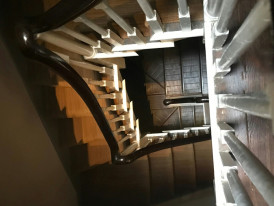
Steep wooden stairs leading up
The approach matters as much as the destination. You climb through the merchant’s actual living quarters, the kitchen, sitting rooms, and bedchamber, before reaching those impossibly steep stairs.
The contrast between domestic life below and sacred space above shows how Amsterdam functioned when religious tolerance had limits.
Those stairs are a calf workout, but the hush at the top always wins.
Note: Those stairs are genuinely steep. This attic church isn’t accessible for people with mobility issues, but the history is worth the climb if you can manage it.
Lieve Heer op Solder is proof that Amsterdam’s best secret spots hide in plain sight, not underground or outside the city.
Want to experience the real Amsterdam with someone who lives there?
A fully private experience, planned and led by a local host who tailors the day to you

Begijnhof courtyard
Begijnhof: Tiny Hidden Houses Behind Spui
Every time I come by, Begijnhof feels like discovering a medieval village in downtown Amsterdam. This 14th-century courtyard housed religious women called Beguines, and it still functions as a residential community seven centuries later.
Most visitors walk right past the small doorway near Spui Square, a hidden place that feels miles from the city noise.
I lower my voice here without thinking, courtyard code.
Inside, you’ll find Amsterdam’s oldest wooden house, House 34, dating from 1528. The tiny houses around the courtyard tell the story of how Amsterdam grew from a fishing village to a merchant capital.
These aren’t museum pieces even if they look the role. They’re still homes.
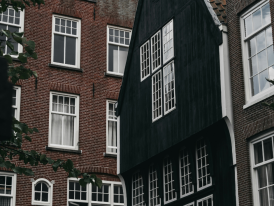
Detail of old wooden house
The courtyard also hides two churches, a Catholic chapel and the English Reformed Church.
The English Reformed Church occupies a medieval chapel that was given to an English-speaking congregation in 1607.
The Catholic chapel (Begijnhofkapel) was created by joining houses, with its foundation stone laid in 1671. There is some debate about the date of the wooden house. Many guides cite c. 1528 (No. 34), while the Begijnhof’s own site says pre-1452.
The Begijnhof appears in guidebooks, but most visitors snap photos and leave without realizing they’re looking at tiny, functional houses that have sheltered Amsterdam women for centuries.
These small homes represent urban density solutions that predate modern city planning by 600 years.

Cat museum with visitors
KattenKabinet: Amsterdam’s Cat Museum in a Canal House
The Cat Cabinet (KattenKabinet) a small cat museum dedicated to cats in art and design occupies a 17th-century canal house on Herengracht.
It’s exactly what the name suggests: a small museum dedicated to cats in art and design: sculpture, paintings, posters, and everything feline from ancient Egypt to contemporary work.
The museum started as one man’s tribute to his red tabby, Tom, and it has grown into a legitimate collection that spans centuries. They rotate displays regularly, so you might see anything from ancient Egyptian cat figures to contemporary installations.
One tabby sat on a lithograph and refused to move. Rightly so.
Several rescue cats roam the museum freely, sometimes sitting right in front of the artworks they seem to illustrate.
For cat lovers, that creates perfect moments where art and life intersect. For everyone else, it’s still worth 15 minutes.
The museum charges a fixed admission (adults €12.50 at this time) and is open Tuesday through Sunday, 12 PM to 5 PM. It genuinely welcomes locals and visitors alike.

Cat boat exterior on calm canal
Amsterdam’s Floating Life Without the Hype
Water isn't scenery here, it's infrastructure. Step onto the city’s surface and watch ordinary life float by.
Our Floating Cat Sanctuary
The Poezenboot, literally “Cat Boat,” moors on the Singel and is Amsterdam’s only floating animal shelter. This sanctuary has housed rescue cats since 1966 and operates as a genuine charity rather than a tourist attraction.
About fifty cats live on board at any time. Current visiting hours are Tuesday, Friday, and Saturday from 1 PM to 3 PM (subject to change). The address is Singel 38-G. Entry is free, and donations are encouraged.
I bring spare change and leave with fur on my coat.
I feel that the Poezenboot represents something uniquely Amsterdam: taking a practical urban need, animal rescue, and solving it with boats because you can. It isn’t Instagram-pretty, but it’s authentically local in ways tourist-focused floating attractions can’t match.
It is run by volunteers and funded by donations. Visitors are welcome, but remember you’re visiting a working animal shelter that happens to float, not a themed attraction that happens to have cats.
Because No Two Travelers Are the Same
We help you shape a city day that matches your pace, your style, and your curiosity, not a fixed route.
Stack of traditional Dutch pancakes
Eating Pancakes on Water
If you are wondering what to eat in Amsterdam, start with the water. The pancake boat at NDSM Wharf in Amsterdam Noord serves unlimited pancakes in a setting most tourists never find. Getting there means taking the ferry from behind Amsterdam Centraal Station, which is one of the city’s best kept secrets.
This is not a dinner cruise packed with confused tourists. It is a floating restaurant where locals go for proper Dutch pancakes and coffee while looking back at Amsterdam’s skyline from the water.
The pancake boat operates seasonally and serves food that is worth eating, not just photographing.
Two pancakes, one coffee, and the skyline doing its quiet best.
The ferry ride to Amsterdam Noord offers better water views than most canal tours, and it is free. Once you arrive, NDSM Wharf has grown into one of the city’s most interesting creative spaces, with art installations, performance venues, and weekend markets that feel nothing like city centre tourism.
Want me to tune for American or British spelling and swap in your preferred tone.
Experiences in Amsterdam Created by Locals, Just for You
See the city through the eyes of the people who call it home
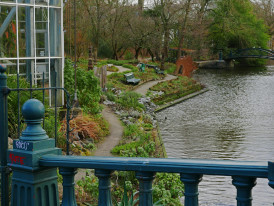
Botanical garden in Amsterdam
Hortus Botanicus: Tropical Calm in a 17th-Century Garden
The Hortus Botanicus near Plantage Middenlaan houses more than 6,000 plant species in Amsterdam’s oldest botanical gardens, founded in 1638.
I've seen that many visitors rush through on their way to bigger attractions, missing one of the city’s most reliable escapes from northern European weather.
The butterfly house recreates a tropical rainforest so well that you forget you’re still in Amsterdam. Dozens of species fly freely while you walk paths that curve around streams and climbing plants.
It’s especially valuable during Amsterdam’s gray winter months when you need to remember what warmth feels like.
I come here in February just to thaw my bones.
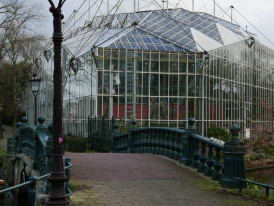
Three-Climate Greenhouse
The Three-Climate Greenhouse opened in 1993, and it divides into desert, tropical, and subtropical environments. Each section maintains different temperature and humidity levels, creating microclimates that support plants from around the world.
Centuries ago, this garden tested exotic species that Amsterdam merchants brought back from trading expeditions.
These aren’t just pretty plants. They’re part of global botanical preservation efforts that connect Amsterdam to scientific communities worldwide.
The Hortus Botanicus reminds me that Amsterdam’s most exotic experiences often hide behind ordinary doors in residential neighborhoods.
More than 26,044 5-star reviews and counting
26,044+ 5-Star Reviews and Counting
Trusted and recommended by travelers worldwide.
Markets With True Culture, Not Magnets for Touristy Crowds
If you want fridge magnets, the center has plenty. If you want breakfast and conversation, try these streets. I love them and I'm sure you will too.

Cheese vendor at Albert Cuyp market
Albert Cuyp Market: Midweek Feels Most Local
In the Pijp neighborhood, the market runs Monday through Saturday. Wednesday morning is when it feels most like the local market it has been since 1905. The flower vendors get overnight deliveries, cheese sellers slice samples from wheels that arrived that morning, and the whole market serves neighborhood residents rather than tourist crowds.
My flower guy wraps tulips in yesterday’s news. Best kind of bouquet.
Albert Cuyp Market is where locals shop for groceries, household goods, vintage clothing, and specialty foods that reflect the city’s real mix of cultures rather than its tourist image.
Walking through the market gives you Surinamese, Turkish, and Moroccan food stalls alongside traditional Dutch goods.
Every time I’ve been there, the flower vendors offer a better experience than the famous Floating Flower Market, which has become almost entirely tourist-focused. Here, you can buy flowers locals actually bring home, not bouquets designed only for photos.

People browsing through Dappermarkt in Amsterdam-Oost
Which Neighborhood Markets Serve Locals Instead of Tourists?
Amsterdam's neighborhood markets work like a network. Each district has its own rhythm and specialties, serving residents who shop for actual groceries rather than souvenirs. Albert Cuyp gets the attention, but the city keeps its most authentic market culture scattered across neighborhoods that tourists rarely explore.
Dappermarkt in Amsterdam-Oost operates Monday through Saturday as the city's most genuinely diverse market.
The stalls reflect the neighborhood's Turkish, Moroccan, and Surinamese populations alongside traditional Dutch vendors.
I like to go there weekday mornings when it feels like shopping in someone else's hometown rather than performing tourism. The produce vendors know their regular customers, and conversations happen in four different languages within earshot.
What Makes the Jordaan’s Saturday Markets Different?
The Jordaan district supports two Saturday markets that serve completely different purposes. Noordermarkt wraps around the Noorderkerk with organic farmers selling bread, cheese, and mushrooms directly to locals who've been shopping here for decades.
Lindengrachtmarkt runs the length of the canal with 232 stalls selling fish, flowers, and household basics that Amsterdam families actually need. Both markets start early and wind down by afternoon, operating on neighborhood time rather than tourist schedules.
Amsterdam-Zuid's Zuidermarkt operates as the city's most community-focused Saturday farmers market. Small-scale vendors, friendly conversations, and produce that reflects seasonal availability rather than year-round tourist expectations.
It feels more like a neighborhood gathering than a commercial transaction, which explains why most visitors never find it.
Curious What You Won’t Find Online About Amsterdam?
Discover the side of this city only locals talk about.

Haarlemmerplein Farmer's Market Bread Stall
Where Can You Find Midweek and Specialty Markets?
For midweek market culture, Haarlemmerplein hosts Wednesday organic markets where you can speak directly with growers about their farming methods.
Ten Katemarkt in the Kinkerbuurt operates daily except Sundays near De Hallen, perfect for coffee-and-browse sessions that feel like everyday Amsterdam rather than some special destination.
Pure Markt rotates between city parks as an artisanal market focused on local makers and specialty foods.
They're often at Park Frankendael the last Sunday of the month and Amstelpark the second Sunday. The rotating schedule means you discover them rather than plan around them, which creates better browsing energy than fixed-location markets.
The monthly IJ-Hallen flea market at NDSM requires taking the completely free ferry to Amsterdam Noord, but it's worth the trip for our largest indoor flea market.
Vintage clothing, household finds, and families selling belongings they've outgrown. It operates on a monthly schedule that changes seasonally.
Small Museum Moments in Grand Buildings
Skip the grand blur, chase the small focus. Quiet corners hold better stories than the main halls.
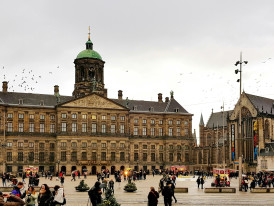
The Royal Palace on Dam Square
Take a Peek Inside the Royal Palace
The Royal Palace on Dam Square holds small museum spaces in corners tour groups rarely reach. Between state functions (the Dutch government actually sits in The Hague), parts of the building open to reveal Amsterdam’s 17th-century history as a merchant republic.
These tiny exhibition rooms contain artifacts that didn’t make it into bigger museums: personal letters from Golden Age merchants, fragments of original City Hall decorations, and maps showing how Dam Square worked when this building was Amsterdam’s political center.
I skip the staircase selfies and hunt the dusty corners.
What makes these moments special is the contrast. You’re in this massive, formal palace surrounded by tourists photographing grand staircases, then you duck into a small room and suddenly you’re reading intimate details about how 17th-century Amsterdam actually functioned as a city.
These museum experiences work best when you see them as glimpses into Amsterdam’s merchant culture rather than royal culture.
This building was designed to impress foreign dignitaries with Amsterdam’s wealth, not to house kings and queens.
Sometimes Amsterdam’s most revealing museum experiences hide in overlooked corners of places everyone already visits.
Neighborhood and Social Gems
Judge a city by its regulars. Sit where people greet the bartender by name and listen.

Traditional brown café
Brown Cafés: Where Amsterdam’s Social Heartbeat Lives
Brown cafés, named because decades of smoke turned their walls brown, function as neighborhood institutions where locals keep social connections that go back generations. Each district has its own rhythm, and these cafés reflect those differences.
Café Hoppe near Spui is often called Amsterdam’s oldest and dates to 1670, but brown cafés in residential areas offer a more everyday feel. Try Café ’t Smalle, which has roots as an 18th-century tasting room.
If the bartender nods before you order, you’re doing it right.
Head to Café ’t Smalle in the Jordaan or small spots in De Pijp, where conversation flows in Dutch and the atmosphere stays genuinely local.
The best time to experience brown café culture is early evening, around 6 PM, when people stop by after work for a quick drink and conversation. Most brown cafés serve simple food such as cheese plates, soup, and sandwiches, but the focus stays on drinks and talk rather than dining.
These places sit off the beaten path because they serve their immediate neighborhoods instead of performing for visitors. You can observe local culture, but do not expect to change social dynamics that have developed over decades.
Amsterdam’s most authentic social spaces operate off the beaten path, keeping traditions that predate tourist culture. For low-key evenings, the best things to do in Amsterdam at night leans local.
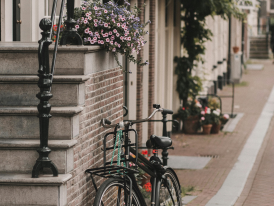
Residential De Pijp street
De Pijp: Contemporary Amsterdam Beyond the Canal Ring
De Pijp grew in the late 19th century as part of Amsterdam’s expansion beyond the medieval city center. It keeps its working-class character while housing the city’s most diverse population, creating a neighborhood that feels modern and impressive.
Walking through De Pijp shows you how Amsterdam functions as a city where people live and work, not just visit. The grid of straight streets contrasts with the Canal Ring’s curves, creating very different urban rhythms.
Straight streets and zero pretense. It’s where my grocery bags get heavy.
Sarphatipark, in the heart of De Pijp, is great for a look at how families use public space. On weekends you see children, dogs, and neighbors maintaining the social connections that make these Amsterdam neighborhoods feel like communities. It feels different from Vondelpark’s international crowds or the Jordaan’s tourist-focused atmosphere.
The former fire station on Sarphatistraat anchors one corner of the neighborhood. It has been converted for community use while keeping its civic architecture.
Imagine Experiencing De Pijp for Real
A local can show you the vibe, flavors, and hidden gems up close.
Overrated “Hidden Gems” and Better Alternatives
Some so-called secrets stopped being secret years ago. Here is where I go instead, and why.
Skip the Floating Flower Market
The Floating Flower Market (Bloemenmarkt) has become an Instagram trap that serves tourists rather than locals. Most stalls now sell souvenirs instead of flowers, and the “floating” part is barely noticeable since the boats are permanently moored.
Better alternative: Visit Albert Cuyp Market on Wednesday morning for fresh flowers locals actually buy for their homes. Vendors focus on seasonal Dutch flowers rather than photo-friendly tulip bulbs.
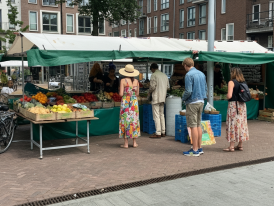
Albert Cuyp Market
Beat Museum Crowds Without Missing the Art
The Van Gogh Museum and Rijksmuseum are worth visiting, but not during peak hours when you spend more time managing crowds than looking at art. Queue culture has made Amsterdam’s famous museums feel like theme parks instead of cultural spaces.
Better alternative: Visit the Cuypers Library reading room or the Portuguese Synagogue during the day for architectural beauty without crowds. Both let you experience Amsterdam’s cultural heritage at your own pace.
If you love modern art, add the Stedelijk Museum to your list. You’ll find works by Pablo Picasso alongside other masters. I know it's touristy, but it's totally worth your time.
Trade Canal Queues for Free Ferries to NDSM
The Central Station area and main canal intersections are packed with tour boats and photo-taking crowds that make the water experience feel industrial rather than peaceful.
Better )lternative: Take the free ferry to Amsterdam Noord for better water views and access to the NDSM cultural area. The ferry runs year-round and shows you Amsterdam’s working relationship with water rather than its tourist performance.
Explore Amsterdam on a Budget
You do not need tickets to feel the city. You need good shoes, open hours, and a few smart habits.
Free Things to Do in Amsterdam for Locals and Visitors Alike
I ride the ferry from Centraal Station to Amsterdam Noord when I need a head-clearer. It is free, the wind wakes you up, and the skyline does the rest. Stand by the rail and watch the gulls chase the wake. It feels more like the real city than most paid canal tours.

Ferry deck with locals and visitors
Slip through the little doorway at Spui and you are in the Begijnhof. I always lower my voice here without thinking. The bricks are worn smooth and the noise of the center drops away.
When I have an extra ten minutes, I pop into the City Archives foyer to see what is on the walls. Maps, permits, photographs. It is free to browse and you never know what you will find.
Many churches offer free concerts. I duck into lunchtime recitals when I can. Historic Protestant churches in the Canal Ring host them, and the Portuguese Synagogue sometimes does, too. Sit near the back, close your eyes, and let the acoustics do the work.
Vondelpark is the obvious green fix. On quieter days I choose Sarphatipark in De Pijp. I bring a coffee and people-watch. Dogs, toddlers, neighbors. It is the everyday rhythm that tells you more than any brochure.
The best free experiences let you step into daily life.
No ticket, no script. Just the city doing what it does. If you have an extra day, well-planned day trips in Amsterdam offer easy escapes.
Before You Go, Talk to Someone Who Knows
A local video call helps you plan the trip that’s right for you.
Frequently Asked Questions
1. What should I not miss in Amsterdam?
The secret Catholic church (Lieve Heer op Solder) and the Begijnhof courtyard offer completely different perspectives on Amsterdam’s history. Both hide in the city center but feel worlds away from the crowds. These hidden gems in Amsterdam reveal layers of the city that guided tours often skip.
2 .Where can I eat in Amsterdam that isn’t touristy?
De Pijp, around Albert Cuyp Market, has some of Amsterdam’s most authentic restaurants. Look for small Surinamese, Turkish, or Moroccan places where you hear more Dutch than English. These spots reflect real local culture rather than international menus designed for tourists.
3. What is the number one tourist attraction in Amsterdam?
The Van Gogh Museum gets the most visitors much of the time, but in 2023 the Rijksmuseum reported 2.7 million visitors, a record year that outpaced Van Gogh’s 2023–2024 figures. I recommend visiting both.
That said, the real attraction is walking the Canal Ring and discovering places people pass without entering, like Westerkerk’s Wednesday lunchtime recitals, the Concertgebouw’s lunchtime concerts, or the Cuypers Library. These quiet moments reveal Amsterdam’s character in a way major Amsterdam attractions can’t.
4. Where is Skinny Alley in Amsterdam?
The well-known “skinny alley” is Trompettersteeg in the Red Light District, about 100 cm wide. Nearby courtyards show some of the city’s most interesting narrow spaces, with history that goes deeper than the novelty of being narrow.
5. What is the prettiest part of Amsterdam?
The Begijnhof courtyard and quiet sections of the Jordaan offer beauty without the crowds. For a different view, look out from NDSM Wharf in Amsterdam Noord to see the city’s relationship with water and industry, not just its postcard image.
6. What unusual things can I do in Amsterdam?
Visit the Cat Cabinet museum, take the free ferry to Amsterdam Noord, or explore the butterfly house at the Hortus Botanicus. These experiences show sides of Amsterdam that have nothing to do with the usual tourist narrative.
7. Where can I meet people in Amsterdam?
Brown cafés, weekend markets like Albert Cuyp, and cultural venues such as concerts at the Portuguese Synagogue create natural social settings. The Jordaan and De Pijp have local cafés where people actually talk. Approach conversations with respect and genuine interest.
8. Where should I avoid at night in Amsterdam?
Use common sense around party areas like Leidseplein and parts of the Red Light District late at night. Stick to well-lit streets with other people around. The city center is generally safe, but avoid isolated areas near Centraal Station after midnight.
9. What is available in the Amsterdam Red Light District?
The Red Light District is a legal, regulated area with museums, bars, cafés, and a history that goes beyond its reputation. Museums like Red Light Secrets add context. Treat the area with respect and follow posted photography rules.
The best Amsterdam experiences happen when you engage with the city as a living place rather than a destination to check off.
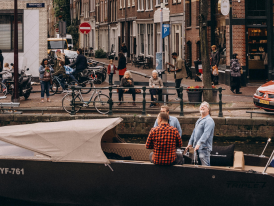
Canal with locals
Final Thoughts
After thirty-four years of walking these streets, I’ve learned that real hidden gems in Amsterdam aren’t places you find on Instagram. They’re moments when you understand how the city actually works rather than how it performs for cameras.
The secret spots I’ve shared connect to bigger questions about how cities preserve character while adapting to change.
Amsterdam keeps revealing itself when you pay attention to ordinary moments: neighbors talking on stoops, history buffs researching in the archives, cat lovers volunteering at the sanctuary.
These experiences matter more than any list of must-see attractions because they connect you to the city’s actual rhythms.
My favorite Amsterdam hidden gems are the ones that make you slow down and notice details that guidebooks skip. Next time you’re here, spend extra time in places where locals do ordinary things.
Those moments often provide more insight into my city than the most famous tourist attractions.
Whether you’re planning your next visit or discovering Amsterdam for the first time, remember that the city’s most valuable secrets are the ones you find by paying attention to what’s happening around you, not by checking items off a list.
The best Dutch experiences rewards curiosity about how places work, not just what they’re supposed to look like.
More To Explore in Amsterdam
Ready to plan your perfect day in Amsterdam?
Start your experienceTravel Guides Can Only Take You So Far
City Unscripted connects travelers with locals who shape days that actually fit your interests - not someone else’s checklist.
Wish you had a local friend in Amsterdam?
One who knows the city inside out and could plan a private day just for you? Our local hosts do exactly that: no scripts, no tourist traps, just the side of the city most people miss.
